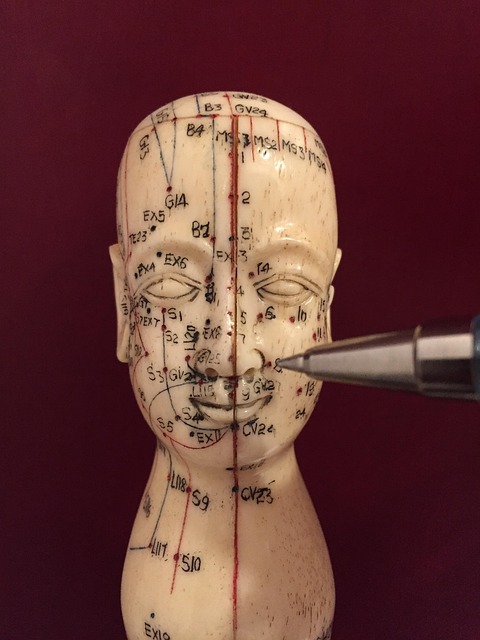Hot and cold therapy are complementary techniques for muscle healing, each addressing different stages of recovery. Hot therapy, utilizing temperatures from warm to hot, increases blood flow, delivers nutrients, reduces inflammation, and accelerates tissue repair, making it ideal for chronic muscle soreness and stiffness. In contrast, cold therapy, like ice packs or cold baths, constricts vessels, numbs pain signals, reduces inflammation, and minimizes swelling, suitable for acute injuries or post-workout soreness. Athletes often alternate between these methods to promote circulation, restore muscular health, and enhance overall well-being.
In the realm of muscle recovery, hot and cold therapy stand as game-changers. This article delves into the science behind these contrasting treatments, exploring their individual benefits and synergistic potential. Understanding the mechanisms of hot therapy, including its relaxation effects on muscles and pain relief capabilities, offers valuable insights for managing acute injuries. Conversely, cold therapy’s numbing sensation and anti-inflammatory properties make it ideal for chronic conditions. By comparing their unique perks and integrating both approaches strategically, individuals can unlock optimal muscle healing and prevent future issues in today’s digital era.
Understanding Hot Therapy for Muscle Healing
Hot therapy, characterized by temperatures ranging from warm to hot, plays a pivotal role in muscle healing. When applied to sore or injured muscles, heat increases blood flow to the affected area, facilitating the delivery of essential nutrients and oxygen. This enhanced circulation promotes faster recovery by reducing inflammation and speeding up the repair process of damaged tissue. Furthermore, heat therapy provides relaxation and comfort, easing tight muscles and alleviating pain.
Unlike cold therapy, which is used for acute injuries or immediate pain relief, hot therapy is more suited to chronic muscle soreness and delayed-onset muscle stiffness. It’s a gentle yet effective method for long-term muscle healing, helping athletes and individuals suffering from persistent muscle discomfort regain mobility and flexibility.
– Definition and mechanisms of hot therapy
Hot therapy, also known as thermotherapy, is a treatment that involves applying heat to specific areas of the body. The mechanisms behind its benefits are rooted in increasing blood circulation and promoting relaxation. When you expose muscles to heat, blood vessels dilate, allowing more oxygen and nutrients to flow to the affected area. This enhanced blood supply facilitates faster muscle healing and recovery by removing metabolic waste products that can cause pain and inflammation. Additionally, hot therapy reduces muscle tension and stiffness, providing relief from aches and pains associated with physical activity or injury.
In contrast to cold therapy, hot therapy leverages the body’s natural response to heat, which is to increase blood flow and promote healing. Unlike cold, which constricts blood vessels and can temporarily reduce inflammation, hot therapy encourages a more active inflammatory response that ultimately aids in tissue repair. This makes hot therapy particularly effective for conditions such as muscle strains, sprains, and chronic pain, where targeted heat application can significantly improve symptoms and accelerate recovery.
– Benefits for muscle recovery and pain relief
Cold and heat therapy are two distinct approaches that offer unique benefits for muscle recovery and pain relief. Cold therapy, often in the form of ice packs or cold baths, is known to reduce inflammation and numb pain signals, making it particularly effective for acute injuries or post-workout soreness. By constricting blood vessels, cold therapy can help alleviate muscle spasms and promote a sense of calm, allowing injured tissues to heal faster.
In contrast, heat therapy, such as warm compresses or saunas, increases blood flow to the affected area, delivering more oxygen and nutrients to stimulate healing processes. Heat is especially beneficial for chronic pain conditions like arthritis or fibromyalgia, where it can help loosen stiff joints and relax tight muscles. Additionally, heat therapy promotes the release of endorphins, our body’s natural painkillers, offering a soothing and comforting effect.
Exploring Cold Therapy Techniques for Muscular Restoration
Cold therapy, also known as cryotherapy, involves exposing the body to extreme cold temperatures for short periods. Techniques such as ice baths, cold compresses, and whole-body cryostimulation are gaining popularity for their potential benefits in muscular restoration. When applied correctly, cold therapy can significantly reduce inflammation and pain associated with muscle soreness and injuries. The decrease in blood flow during cold exposure helps to minimize swelling and provides a sense of numbness that eases discomfort.
Additionally, cold therapy stimulates the release of endorphins, the body’s natural painkillers, which can enhance overall well-being. Many athletes incorporate cold and heat therapy for muscle healing as part of their recovery routines, alternating between extreme temperatures to promote circulation and restore muscular health. This approach leverages the dual nature of cold therapy—reducing inflammation and providing analgesic effects—to achieve optimal muscle recovery.
Hot and cold therapy, often considered complementary treatments, offer distinct benefits for muscle healing. Hot therapy facilitates blood flow, speeding up recovery and providing pain relief, while cold therapy reduces inflammation and numbs the area to prevent further injury. Incorporating both into your post-workout routine can enhance overall muscular restoration, catering to various needs in the pursuit of optimal physical well-being.
